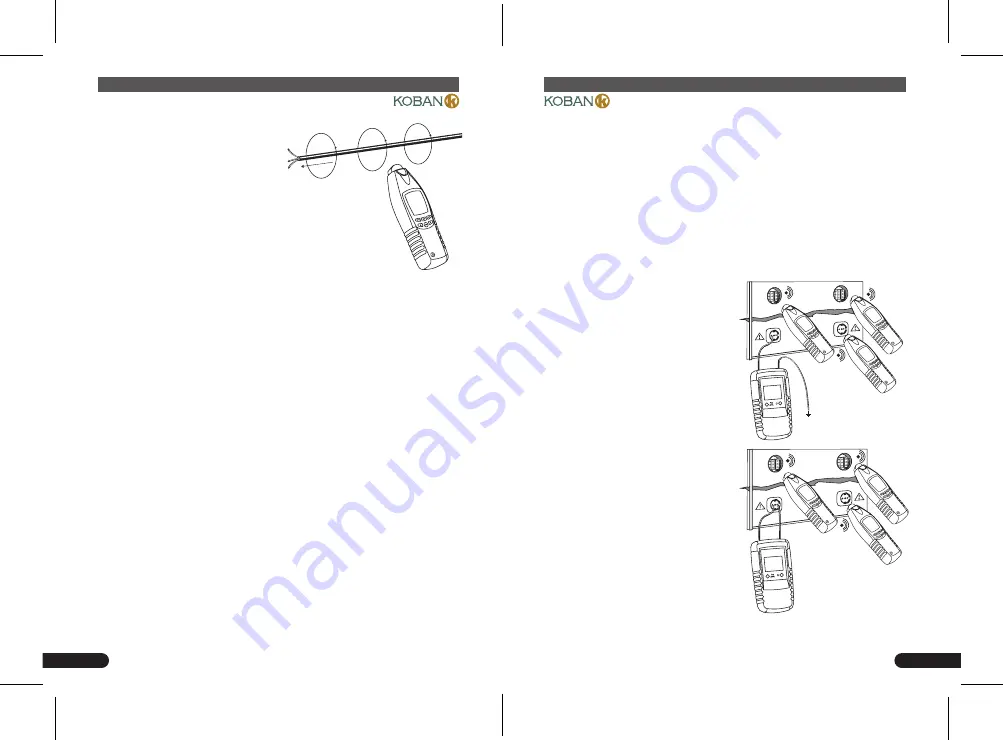
9
10
KCL-01
KCL-01
3 Operating Principle
The Cable Locator consists of a transmitter
and a receiver. The signal generated by the
transmitter consists of a modulated
current.
Generating a magnetic field around a
conductor.
See figure 1. This electro-magnetic field
surrounding the conductor induces a
voltage within the receiver coils. For both
automatic and manual mode, the receiver works with three coils and does, not depend on
a position.
A selective and position-dependant search is performed in selective mode with only one
active coil.
Figure 1
3.1 Locator in complete circuits
One-pole application: Connect the transmitter to only one conductor (one pole application).
In this operational mode, the transmitter is supplied by the built-in battery. Due to the
high-frequency signal generated by the transmitter, only one single conductor can be
located and traced. The second conductor is the ground.
This arrangement causes a high frequency current to flow through the conductor and to
be transmitted to ground, similar to a radio and receiver.
Double pole application: Connect the transmitter to the mains(double-pole application). The
transmitter is supplied by the mains. In this example, the modulated current flows through
the phase into the transformer and back through neutral. There is a further possibility
for voltage free systems by connecting the transmitter to two line terminals while short-
circuiting the other line ends. Thus a complete circuit is created. Then, the transmitter is
supplied by the built-in battery.
Note:
The Cable Locator can only detect or locate lines, which are connected correctly in
accordance with the physical principle described.
3.2 One pole application( In open circuits)
Line interruptions in walls and floors. Finding and tracing of lines, sockets, junction box,
switches, etc. for house installations. Finding bottlenecks, kinking and bucklings and
obstructions in installation pipes by means of a metal coil.
The ground connector must be connected to a suitable earth. A typical example would be
an earthed socket. The tracing depth amounts to 0...2 meters.
Note:
The tracing depth depends on the medium and application.
Figure 2
Figure 3
3.3 Double pole application( In complete circuits)
When detecting short-circuits or during wire
sorting, i.e circuits with or wihout voltage.
Voltage –free circuits are directly supplied
by the instrument battery. Example for
a
complete circuit: Complete circuits are
apppropriate for: i.e. detecting sockets,
switches, etc in live installations.
Note:
The tracing depth amounts to 0...0.5
meters
The tracing depth depends of medium and
application
When connecting in live circuits, safety
regulations must be followed.
The switching with button 4 from LEVEL
I to LEVEL III the sensitvity of Distance is
increased up to factor 5.
EN
EN
















































